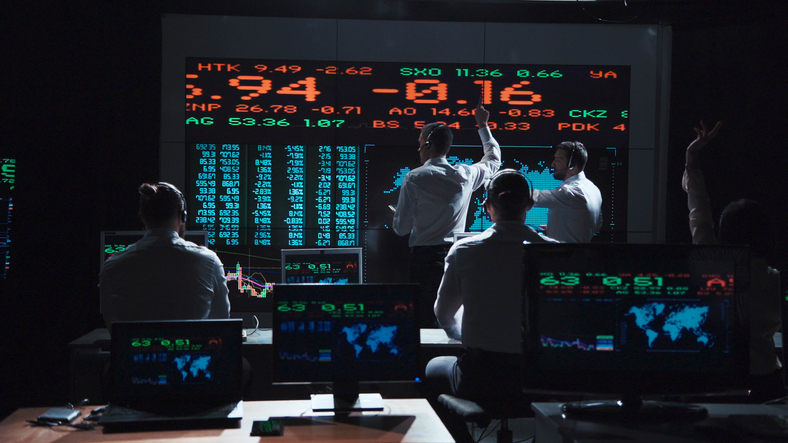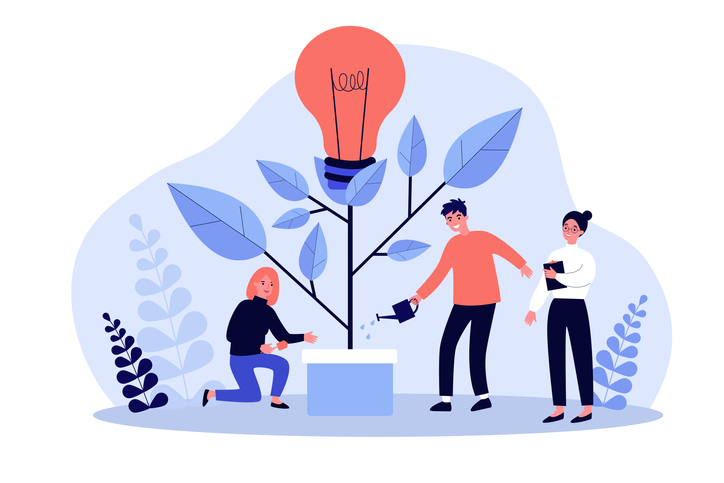What Is Stagflation?
Learn about the World Bank’s global economic outlook.
Stagflation—a toxic cocktail of stagnating growth and rising prices—is generally viewed as a relic of the 1970s. But economists are warning it could make a comeback.
What is stagflation?
The term is broadly defined as sluggish growth tied with rising inflation. Economists haven’t given it much thought since the 1970s, when U.S. consumers lined up to fill their cars with high-price gasoline and the jobless rate hit 9%.
Earlier this week, the World Bank sharply lowered its growth forecast for the global economy this year and warned of several years of high inflation and tepid growth reminiscent of the stagflation of the 1970s.
Stagflation spells trouble for the economy. Rising inflation erodes consumer purchasing power, and weaker demand hurts companies’ profits and causes layoffs.
Stagflation also puts the Federal Reserve in a bind because the central bank’s job is to keep both inflation and unemployment low. The Fed can raise interest rates to curb inflation—a path it has started on and intends to continue this year—but if it moves too aggressively it risks strangling spending and tipping the economy into a recession.
Why is stagflation a risk now?
Inflation is close to a 40-year high, and economists are worried about economic growth because of the war in Ukraine as well as lockdowns in China and supply-chain disruptions related to the Covid-19 pandemic.
Are we in a period of stagflation now?
Not necessarily. Inflation is high, but unemployment remains near a half-century low. The U.S. economy contracted in the first quarter as supply disruptions weighed on output, but most economists expect growth will resume in the second quarter because of strength in consumer and business spending. Stagflation would be a sustained period of both higher inflation and slower growth, not just one quarter.
Stagflation remains a risk to the U.S. economy, and there are similarities between the situation in the 1970s and today. Surging prices for oil and food are pushing up the cost of living, and business executives are voicing concerns about the outlook for the economy.
But the key difference between the situation in the 1970s and today is employment. During the 1970s and early 1980s, the unemployment rate at times was around 10%. It was just 3.6% in May 2022. U.S. layoff announcements, for now, are few and far between.
What is the difference between stagflation and inflation?
Inflation refers to an increase in prices for goods and services. The Fed likes to see a bit of inflation. It targets 2% inflation a year, because that signals healthy demand in the economy. But if inflation rises too quickly, the rapid price increases erode households’ purchasing power. Stagflation is a situation in which prices are rising, but demand is weakening and economic growth is slowing or contracting. As a result, businesses make less money and cut jobs, driving up unemployment. At worst, that pushes the economy into a recession.
Has stagflation happened before?
Yes, stagflation occurred from the early 1970s to the early 1980s, when surging commodity prices and double-digit inflation collided with high unemployment.
British Parliamentarian Iain Macleod is credited with first using the word stagflation in 1965. “We now have the worst of both worlds—not just inflation on the one side or stagnation on the other, but both of them together. We have a sort of ‘stagflation’ situation.”
Its seeds were planted in the late 1960s, when President Lyndon B. Johnson revved up growth with spending on the Vietnam War and his Great Society programs. Fed Chairman William McChesney Martin, meanwhile, failed to tighten monetary policy sufficiently to rein in that growth.
In the early 1970s, President Richard Nixon, with the acquiescence of Fed Chairman Arthur Burns, tried to tame inflation by imposing controls on wage and price increases. The job became harder in 1973 after the Arab oil embargo drastically drove up energy prices, and overall inflation. Mr. Burns persistently underestimated inflation pressure: In part, he didn’t realize that the economy’s potential growth rate had fallen and that an influx of young, inexperienced baby boomers into the workforce had made it harder to get unemployment down to early-1960s levels.
As a result, even when the Fed raised rates, pushing the economy into a severe recession in 1974-75, inflation and unemployment didn’t fall back to the levels of the previous decade.
The stagflation of the 1970s ended painfully. Fed Chairman Paul Volcker drastically boosted interest rates to 20% in 1981, triggering a recession and double-digit unemployment.
Reprinted by permission of The Wall Street Journal, Copyright 2021 Dow Jones & Company. Inc. All Rights Reserved Worldwide. Original date of publication: June 14, 2022.
 Copyright 2020, Dow Jones & Company, Inc. All Rights Reserved Worldwide. LEARN MORE
Copyright 2020, Dow Jones & Company, Inc. All Rights Reserved Worldwide. LEARN MORE
This stylish family home combines a classic palette and finishes with a flexible floorplan
Just 55 minutes from Sydney, make this your creative getaway located in the majestic Hawkesbury region.
Continued stagflation and cost of living pressures are causing couples to think twice about starting a family, new data has revealed, with long term impacts expected
Australia is in the midst of a ‘baby recession’ with preliminary estimates showing the number of births in 2023 fell by more than four percent to the lowest level since 2006, according to KPMG. The consultancy firm says this reflects the impact of cost-of-living pressures on the feasibility of younger Australians starting a family.
KPMG estimates that 289,100 babies were born in 2023. This compares to 300,684 babies in 2022 and 309,996 in 2021, according to the Australian Bureau of Statistics (ABS). KPMG urban economist Terry Rawnsley said weak economic growth often leads to a reduced number of births. In 2023, ABS data shows gross domestic product (GDP) fell to 1.5 percent. Despite the population growing by 2.5 percent in 2023, GDP on a per capita basis went into negative territory, down one percent over the 12 months.
“Birth rates provide insight into long-term population growth as well as the current confidence of Australian families,” said Mr Rawnsley. “We haven’t seen such a sharp drop in births in Australia since the period of economic stagflation in the 1970s, which coincided with the initial widespread adoption of the contraceptive pill.”
Mr Rawnsley said many Australian couples delayed starting a family while the pandemic played out in 2020. The number of births fell from 305,832 in 2019 to 294,369 in 2020. Then in 2021, strong employment and vast amounts of stimulus money, along with high household savings due to lockdowns, gave couples better financial means to have a baby. This led to a rebound in births.
However, the re-opening of the global economy in 2022 led to soaring inflation. By the start of 2023, the Australian consumer price index (CPI) had risen to its highest level since 1990 at 7.8 percent per annum. By that stage, the Reserve Bank had already commenced an aggressive rate-hiking strategy to fight inflation and had raised the cash rate every month between May and December 2022.
Five more rate hikes during 2023 put further pressure on couples with mortgages and put the brakes on family formation. “This combination of the pandemic and rapid economic changes explains the spike and subsequent sharp decline in birth rates we have observed over the past four years,” Mr Rawnsley said.
The impact of high costs of living on couples’ decision to have a baby is highlighted in births data for the capital cities. KPMG estimates there were 60,860 births in Sydney in 2023, down 8.6 percent from 2019. There were 56,270 births in Melbourne, down 7.3 percent. In Perth, there were 25,020 births, down 6 percent, while in Brisbane there were 30,250 births, down 4.3 percent. Canberra was the only capital city where there was no fall in the number of births in 2023 compared to 2019.
“CPI growth in Canberra has been slightly subdued compared to that in other major cities, and the economic outlook has remained strong,” Mr Rawnsley said. “This means families have not been hurting as much as those in other capital cities, and in turn, we’ve seen a stabilisation of births in the ACT.”
This stylish family home combines a classic palette and finishes with a flexible floorplan
Just 55 minutes from Sydney, make this your creative getaway located in the majestic Hawkesbury region.





















